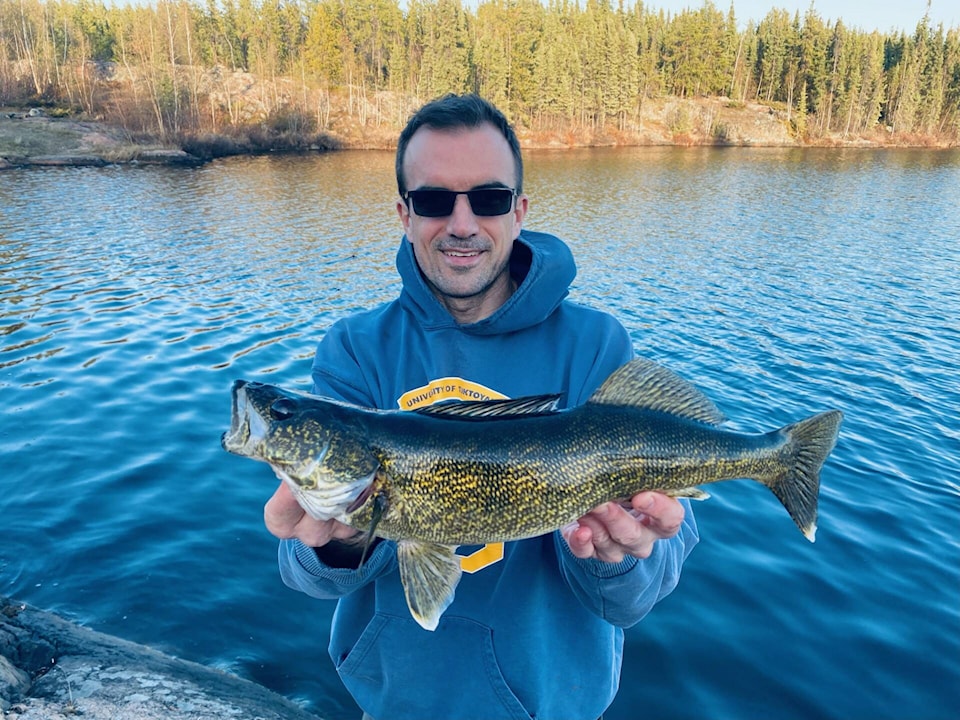On its own, sport fishing in the NWT is a relativley simple act. The laws it comes with, not so much.
Take walleye for example, a popular fish in the territory. How many someone can catch and possess is ruled by law, but determining which law to follow is challenging.
A simple Google search for SA����Ӱ�Ӵ�ý�NWT sport fishing regulationsSA����Ӱ�Ӵ�ý� will produce two immediate hits, both government links.
One is the NWT Sport Fishing Regulations Guide, produced by the territorial governmentSA����Ӱ�Ӵ�ý�s Department of Environment and Climate Change, the other is from the federal governmentSA����Ӱ�Ӵ�ý�s justice laws website, the NWT Fishery Regulations.
These two sources are not consistent when it comes to catching walleye, yet both are laws.
The NWT Sport Fishing Regulations Guide says the daily catch and possession limits for walleye in SA����Ӱ�Ӵ�ý�all other NWT watersSA����Ӱ�Ӵ�ý� SA����Ӱ�Ӵ�ý� that is, most NWT waters, are either one and one, or four and seven, depending on the time of year. The limit for walleye is reduced in the spring while the species is in spawning mode.
The NWT Fishery Regulations from the federal Department of Fisheries and Oceans (DFO) says the daily catch and possession limits for walleye, also in all other NWT waters, is a flat five and 10, respectively.
Accoring to DFO, a daily catch limit is the number of fish of each species a person may catch and keep in a daySA����Ӱ�Ӵ�ý�s time. A possession limit is the total number of fish of each species that a person can possess at any time.
Robert Rombouts is the communications advisor for Fisheries and Oceans Canada. In an email, he helped clear things up.
SA����Ӱ�Ӵ�ý�The initial daily catch and possession limits are established under the Northwest Territories Fishery Regulations (NWTFR),SA����Ӱ�Ӵ�ý� he wrote.
SA����Ӱ�Ӵ�ý�However, DFO uses variation orders (a regulatory tool) to change the limits in the NWTFR so the sport fishery can be managed sustainably. The revised limits, established under variation orders, are published in the NWT Sport Fishing Regulations Guide.SA����Ӱ�Ӵ�ý�
He said as a rule of themb, people should follow the catch limits as published in the annual fishing regulations guidebook produced by ENR.
According to the Arctic Recreational Fisheries guide from the Governement of Canada, SA����Ӱ�Ӵ�ý�variation orders update the Northwest Territories Fishery Regulations to meet immediate needs, including changes to daily catch and possession limits
Fish, like walleye, start with a base rate of its catch and possession limits. In this case, five and 10, respectivley. When a variation order starts, those numbers change. Again, for walleye, the numbers drop to either one and one, or four and seven, depnding on the time of year.
The variation orders follow in June, August, September and November, with the limits changing according to those variation orders, Rombouts wrote.
SA����Ӱ�Ӵ�ý�The variation orders and subsequent limit changes are planned ahead, and already accounted for in the published NWT Sport Fishing Regulations Guide.SA����Ӱ�Ӵ�ý�
The latest NWT Sport Fishing Regulations Guide came out at the start of the month. The catch and possession limits for Walleye are no different than what they were last year.
Rohan Brown has been an angler for years. He said he looked at these regulations about four or five years ago.
SA����Ӱ�Ӵ�ý�I was surprised to see a lot of discrepancies,SA����Ӱ�Ӵ�ý� he said.
Brown said he hasnSA����Ӱ�Ӵ�ý�t been bothered too much about the difference in limits and that it would likley only bother people trying to fish and keep the most amount of fish possible.
As an angler, he said heSA����Ӱ�Ӵ�ý�d err on the side of caution.
SA����Ӱ�Ӵ�ý�ISA����Ӱ�Ӵ�ý�m going with whatever document sets out a lower limit for the number of fish you can keep.SA����Ӱ�Ӵ�ý�



